Eco-village Vrsine and Inland Marina: Holidays in All-Natural Dalmatia
December 7, 2021 – How one small community preserves the authentic sights, scents, sounds and flavours of traditional Dalmatia by offering sustainable, all-natural holidays in the hinterland. Meet Eco-village Vrsine and inland Marina.
Everything best about a holiday in Dalmatia is a gift of nature. Whether it's the sunshine-filled days, the crystal clear seas, the fresh food on your plate or the scent of lavender, pines and herbs. These are the memories of Dalmatia that last. Timeless, inimitable, unique.
And yet, in our rush to experience Dalmatia, often we risk losing sight of these fundamental reasons for being here. Holidays in this part of Croatia are often sold by the sleek design of modern apartments, fully air-conditioned hotels and luxury villas. Here, you can choose from 50 different breakfast options and food from all around the world.
But, for those yearning to experience traditional, authentic Dalmatia, the solution is often very simple – step into the hinterland. There, you'll quite often find Dalmatia as it always was, and as it should be.
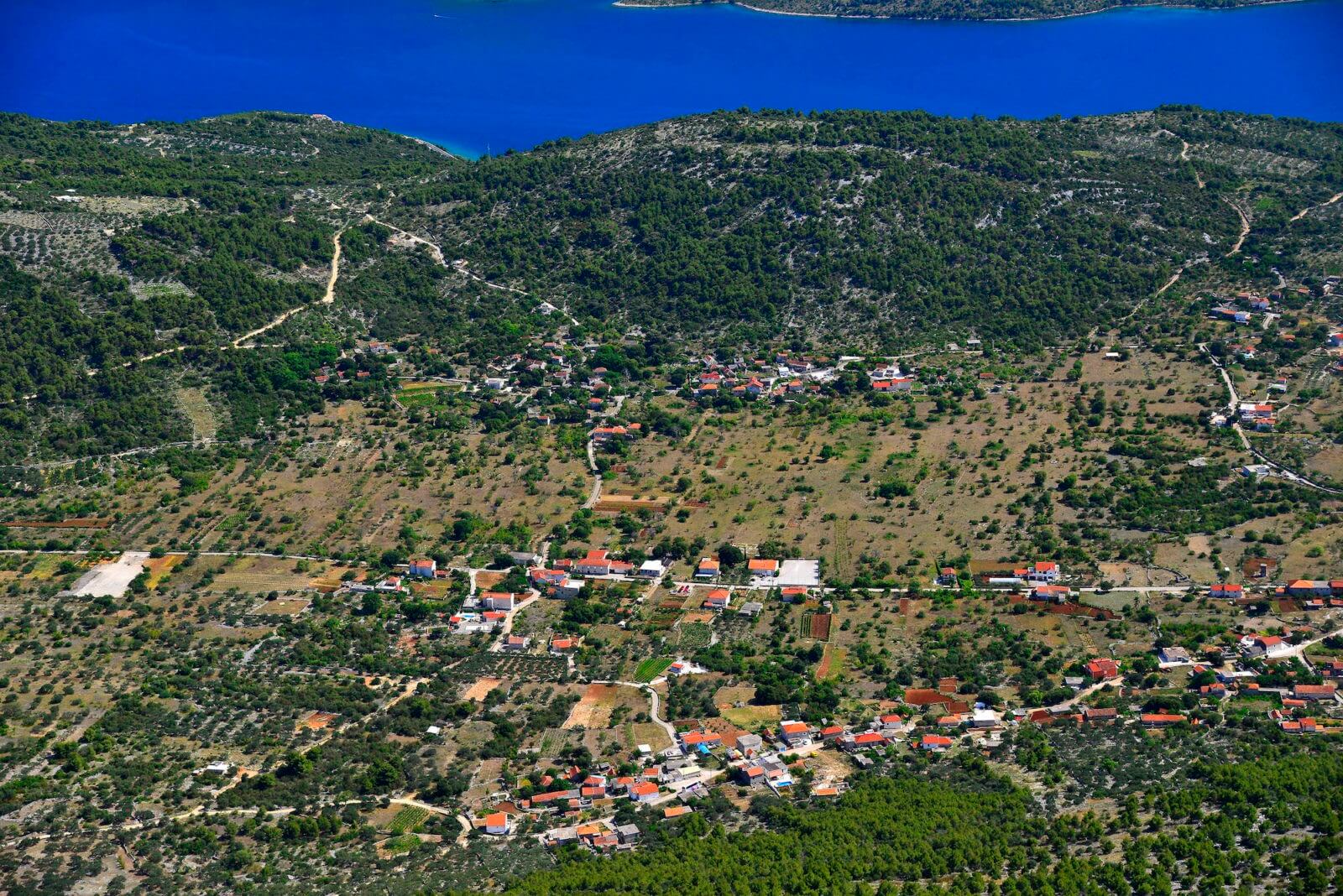 Eco-village Vrsine and inland Marina © Ivo Pervan
Eco-village Vrsine and inland Marina © Ivo Pervan
That's certainly the case in the small Dalmatian municipality of Marina. Lying less than 10km to the west of Trogir, less than 40km from Split, Marina is not without a classic Dalmatian coastline. In fact, it has a generous stretch of great beaches around Poljica Bay. But, that's just a tiny taste of what's on offer here.
Just a short distance north, up into low lying hills, are villages that hold the true sights, sounds, flavours and scents of Dalmatia. It is a natural landscape, marked by telltale signs of agriculture – rows of vines or olive trees, dry stone walls. Of course, in these times, not everyone here still works in farming. But, many do. And, those who don't still live in harmony with this environment. They might not plough the fields or grow their own food, but everyone in Eco-village Vrsine and many in inland Marina live at one with nature. And, that's how they market themselves as a destination. This is what's on offer just a few minutes back from the sea.
Eco-village Vrsine and Inland Marina
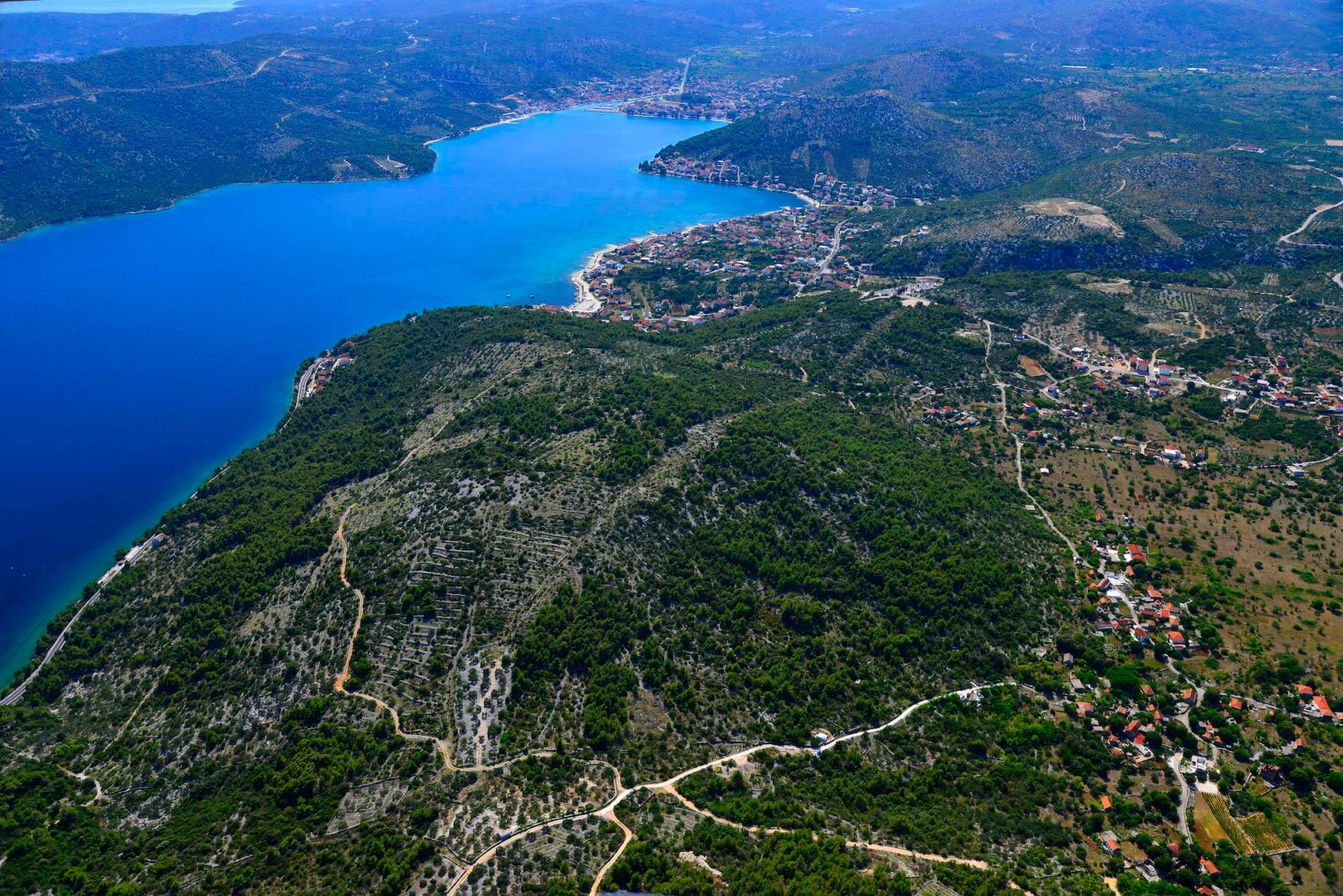 Eco-village Vrsine and inland Marina © Ivo Pervan
Eco-village Vrsine and inland Marina © Ivo Pervan
Learn the A to Z of Mediterranean olive oil at OPG Šalov (Šalov Family Farm)
 Eco-village Vrsine and inland Marina: OPG Šalov
Eco-village Vrsine and inland Marina: OPG Šalov
The abundance of sunlight and gently rolling slopes make this part of the Dalmatian hinterland perfect for olive groves. Three generations of the Šalov family live and work on the Šalov family farm, looking after their 650 olive trees. Some of them are over 200 years old and the family has deliberately diversified to include 50 different varieties of olives from across the Mediterranean.
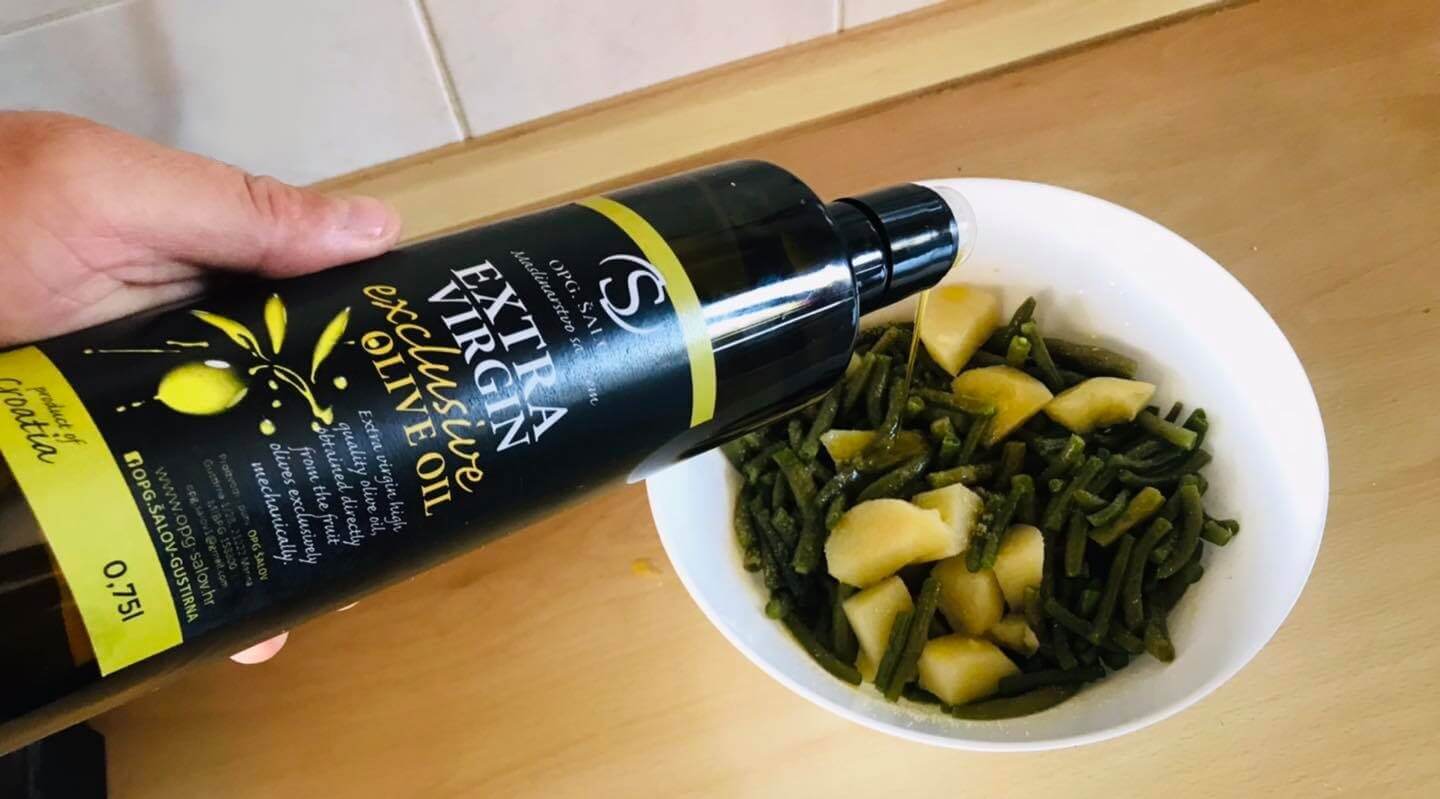
This is the opposite of intensive farming, a sustainable endeavour that much reduces the farm's footprint on the environment.

You can visit the farm to learn about olive trees and how the family make their award-winning olive oil. Of course, you get to try the finished product and in October and November, you can even help out with the olive picking – it's all done by hand.
You can learn more about OPG Šalov here
See superfoods in miniature at Jakus Family Farm
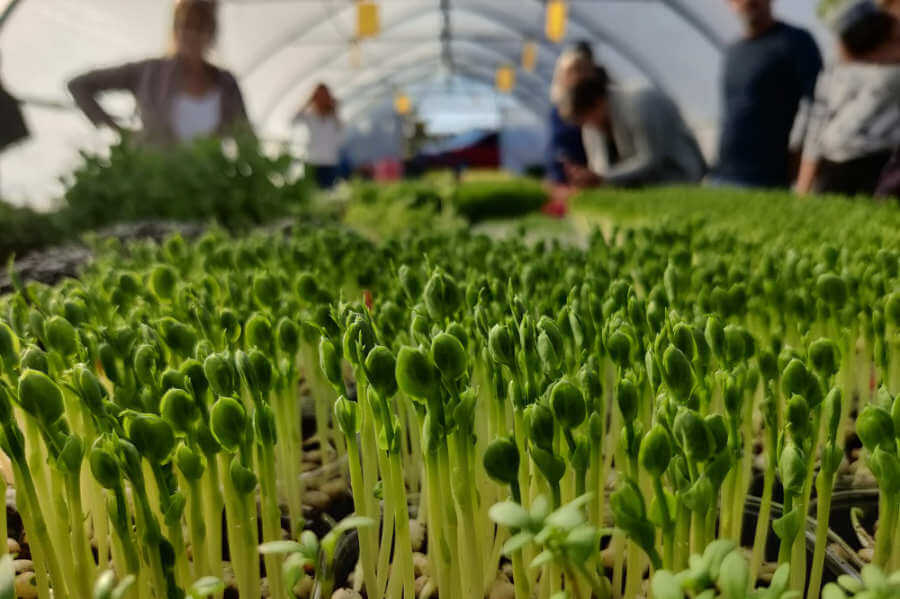 Eco-village Vrsine and inland Marina: Jakus Family Farm
Eco-village Vrsine and inland Marina: Jakus Family Farm
Usually, you don't see very much of the produce from Vesna Jakus's family farm. Well, the microgreens, herbs and edible flowers she grows are very small. And also, they're in high demand.
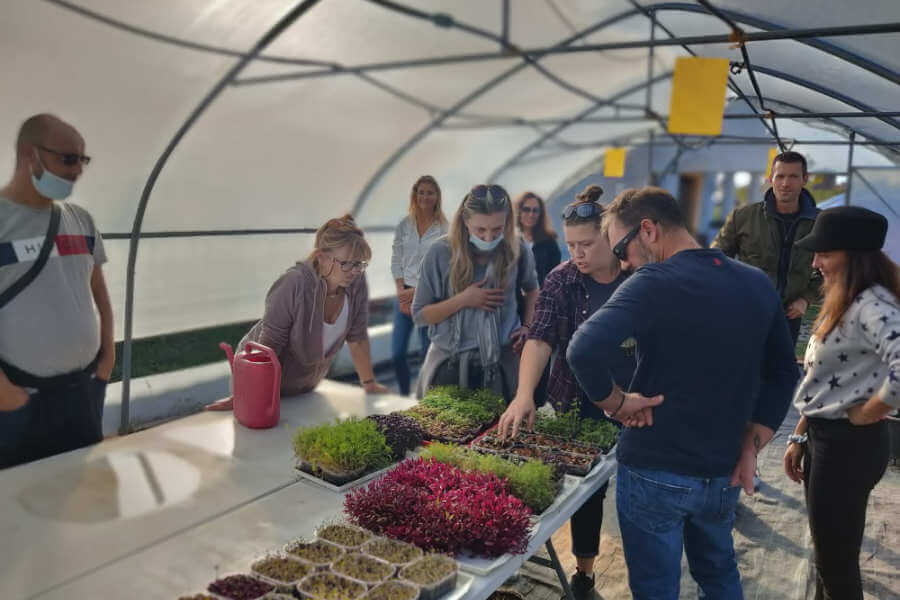
You'll see leaves and flowers from Jakus Family Farm on plates at some of the fanciest hotels and finest restaurants in Dalmatia. They're full of antioxidants, vitamins, minerals and flavour, making them a chef's favourite.
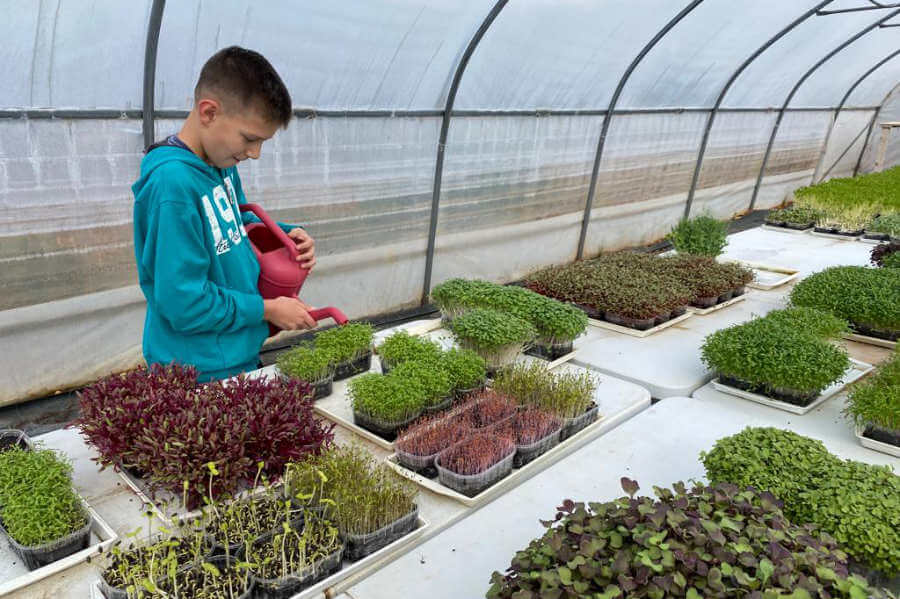
Vesna grows everything using only organic and GMO-free seeds and all-natural methods. She doesn't use energy-burning lamps. Instead, her greenhouse harnesses sunlight, retaining the heat of the day so the microgreens stay warm at night – even in winter. Some of the varieties she grows are green pea, red beets, mangold, red radish, beans, adzuki beans, sunflower and basil, all of them fed by the rainwater she collects.
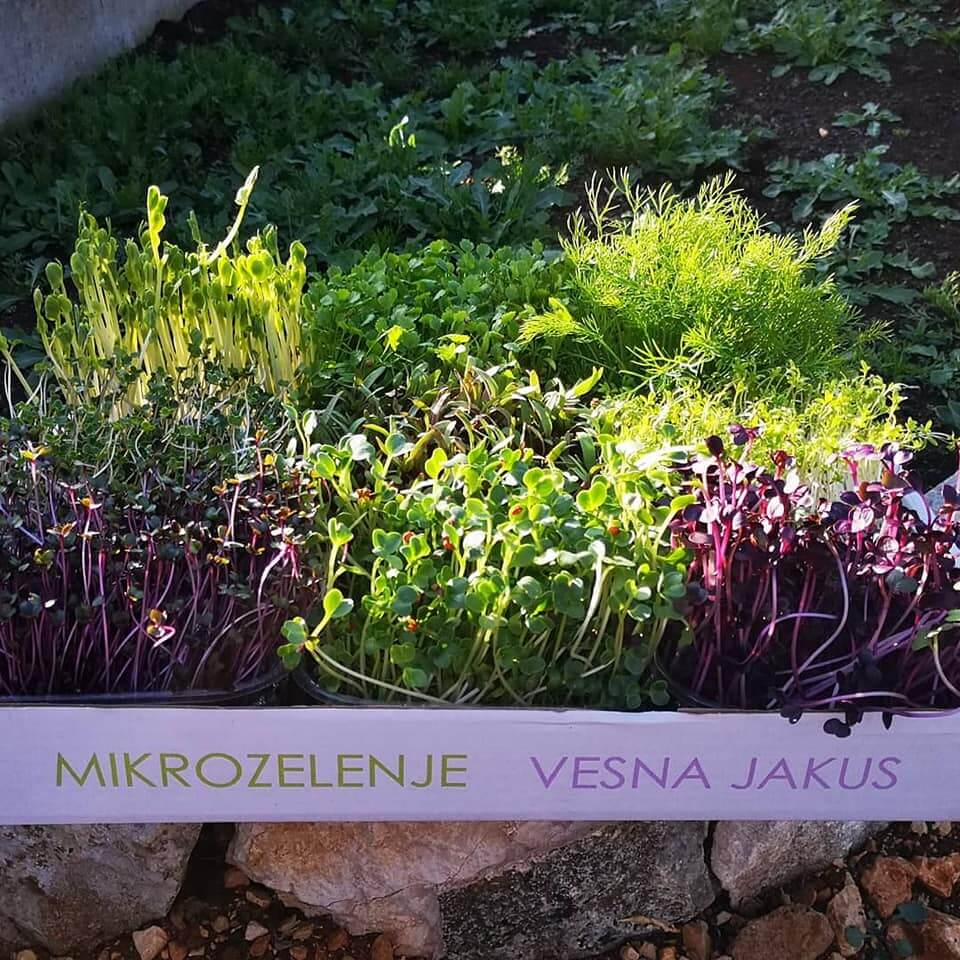
You can learn more about these natural growing methods by visiting Jakus Family Farm and you can see more of what Vesna does here.
Reconnect with You at a holistic wellness and Yoga retreat
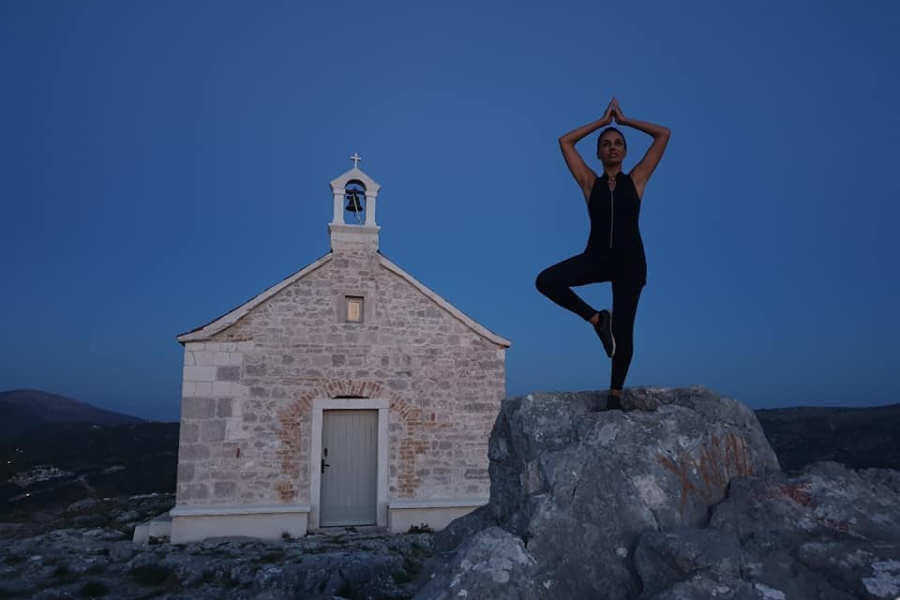 Eco-village Vrsine and inland Marina: Holistic Wellness and Yoga
Eco-village Vrsine and inland Marina: Holistic Wellness and Yoga
Brazilian Yoga and wellness instructor Sylvia Nunes left behind a high flying city career in order to move to Vrsine, where she lives with her partner Mario. But, before the move, a lot of thought went into the relocation and the repurposing of her life.

First, she visited ecovillages around the world and learned how they combined community, sustainability and wellness. The result is the holistic wellness programme that visitors can experience when staying in Eco-village Vrsine with Sylvia.
Held during the spring and autumn seasons, guests at Sylvia's retreats will experience many aspects of the life of the village. They'll connect with the community and the nature that sustains its members. Visitors might take part in tree planting/reforestation programmes and other ecological projects locally. Before every day's endeavours, there are guided yoga sessions held in the peace and calm of the village's nature.
Discover the scents, flavours and wellness properties of Dalmatia's traditional herbs at Rozga Family Herb Farm
 Blizna Gornja in inland Marina: Rozga Family Herb Farm
Blizna Gornja in inland Marina: Rozga Family Herb Farm
If your Dalmatia stay keeps you in restaurants on the coast, you might not encounter many of Dalmatia's herbs. Maybe some rosemary or parsley on your plate, or the scent of lavender from nearby? But, if you travel further back from the shore, up into the foothills around the village of Blizna Gornja, many secrets will be revealed.

Here, herbalist Mira Rozga keeps ancient and localised wisdom alive. Her herb garden sits on the slopes of hinterland hills and in it grow many different kinds of Mediterranean herbs. These are put to use not only as flavourings in food but also in cosmetics and in health, medicine and wellness products.
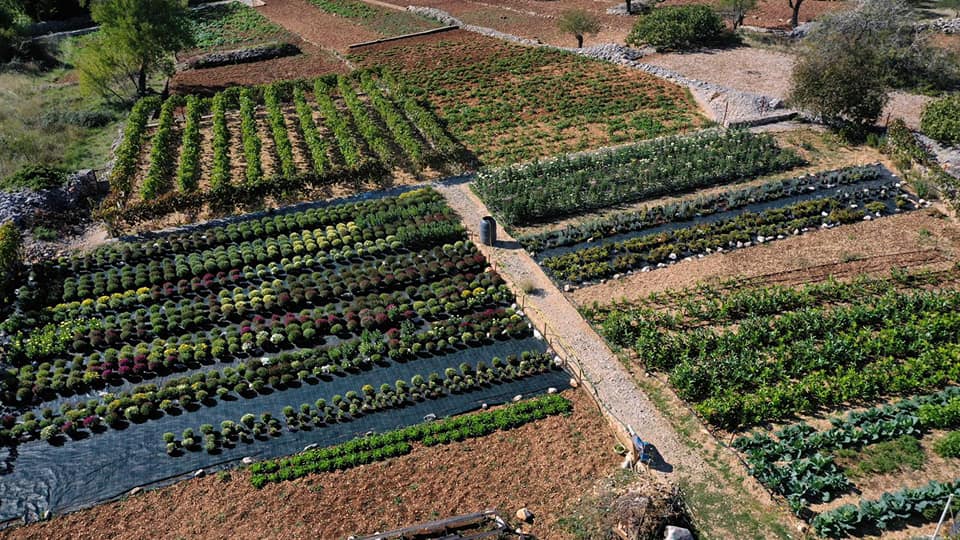
You can get to know the scents of Dalmatian herbs by walking around the 30 different varieties grown in the Rozga family herb garden. And, you can learn their secret properties from Mira herself. For more information, look here.
Treat yourself to a luxurious but traditional rural stay at Eco Villa Home Sweet Home
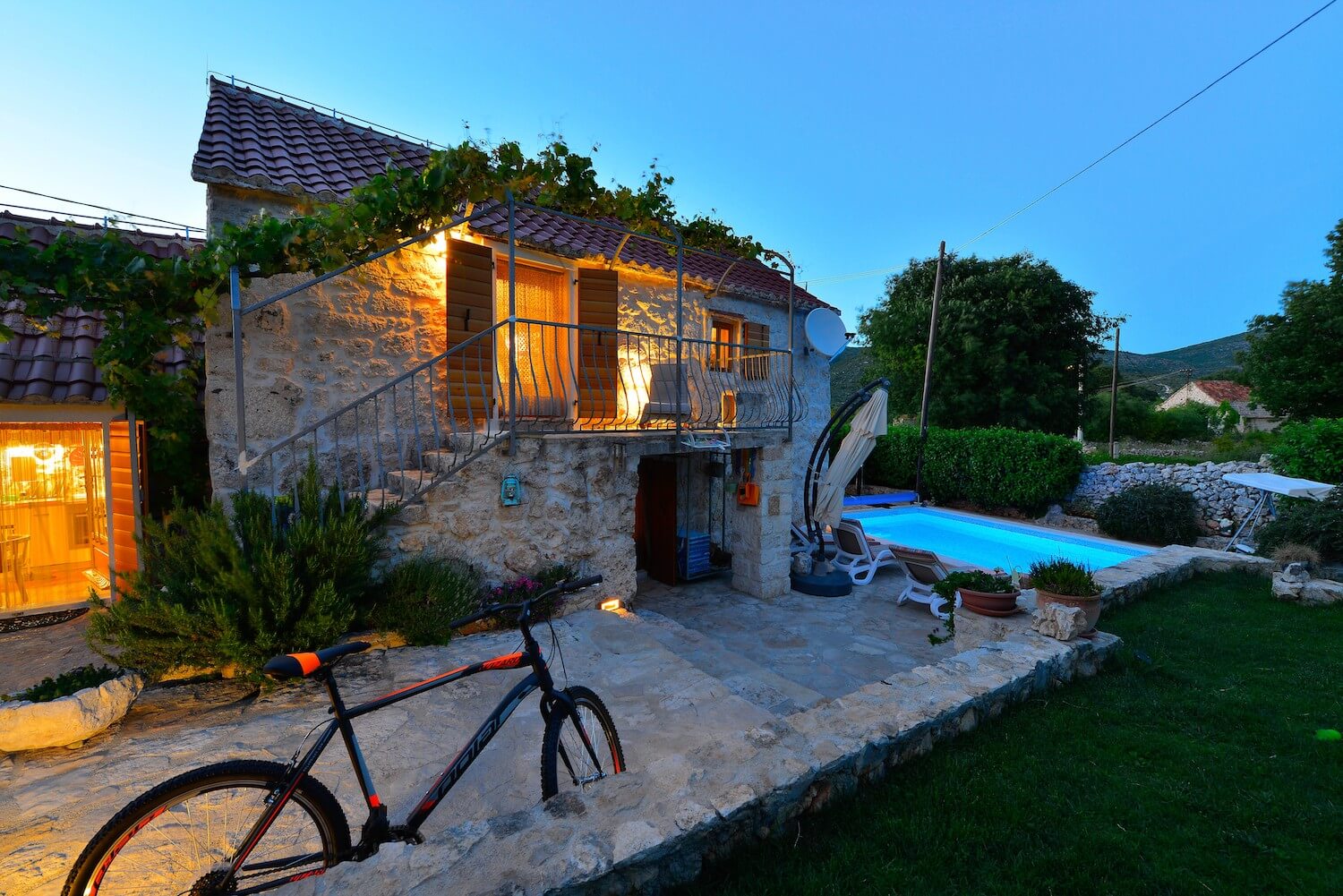 Eco-village Vrsine and inland Marina: Eco Villa Home Sweet Home
Eco-village Vrsine and inland Marina: Eco Villa Home Sweet Home
If you want to take your time in enjoying Eco Village Vrsine and the surrounding villages, a longer stay is advised. And there are few more luxurious choices for doing so than in this traditional stone house, renovated with the specific ethos of the eco-village in mind.

Eco Villa Home Sweet Home preserves the original architecture of a centuries-old Dalmatian stone house. But, it enhances its fit into today's environment by using modern innovation. Power comes from strips of solar panelling atop the roof, there's an extensive organic garden, furnishings made by local artisans, enough WiFi to work remotely and a pool.
The villa is available to rent year-round and you can find out more here.
Immerse yourself in nature on a camping stay at Robinson Glamping Camp Marta
 Eco-village Vrsine and inland Marina: Robinson Glamping Camp Marta
Eco-village Vrsine and inland Marina: Robinson Glamping Camp Marta
Holiday accommodation often feels far removed from traditional and the natural environment. At Robinson Glamping Camp Marta it's the opposite.

You'll fall asleep every night surrounded by the scent of lavender and herbs. When you wake in the morning, your first sight is the olive grove in which your glamping hut is placed.
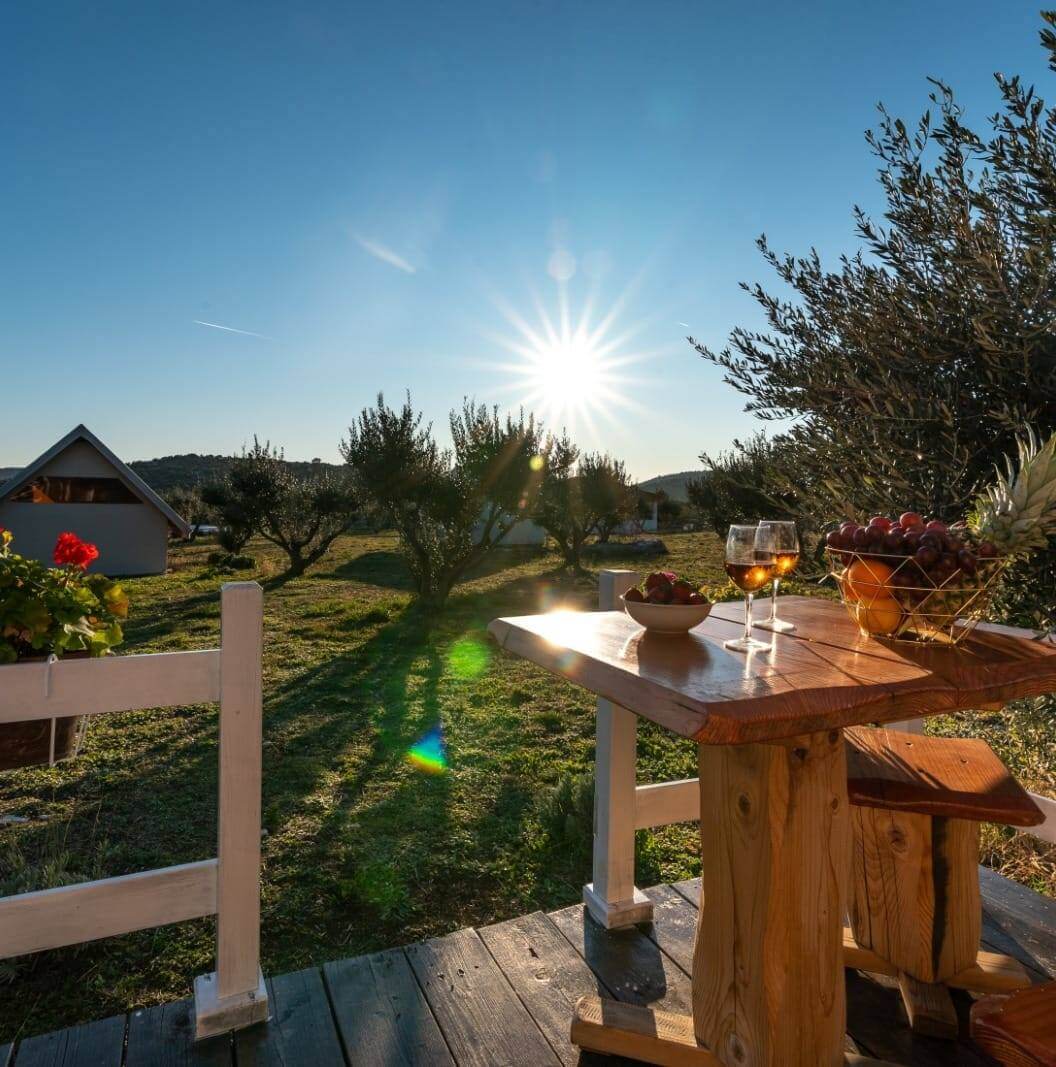
The huts themselves are made from all-natural materials – the huts are made of wood, then sheltered from the sun by a canvas tent. The whole 12,500 m2 plot is surrounded by traditional drystone walls and there's a covered picnic area and generous pool too.
Find out more here.
Taste the full and delicious flavours of traditional Dalmatian food at Konoba Donja Banda
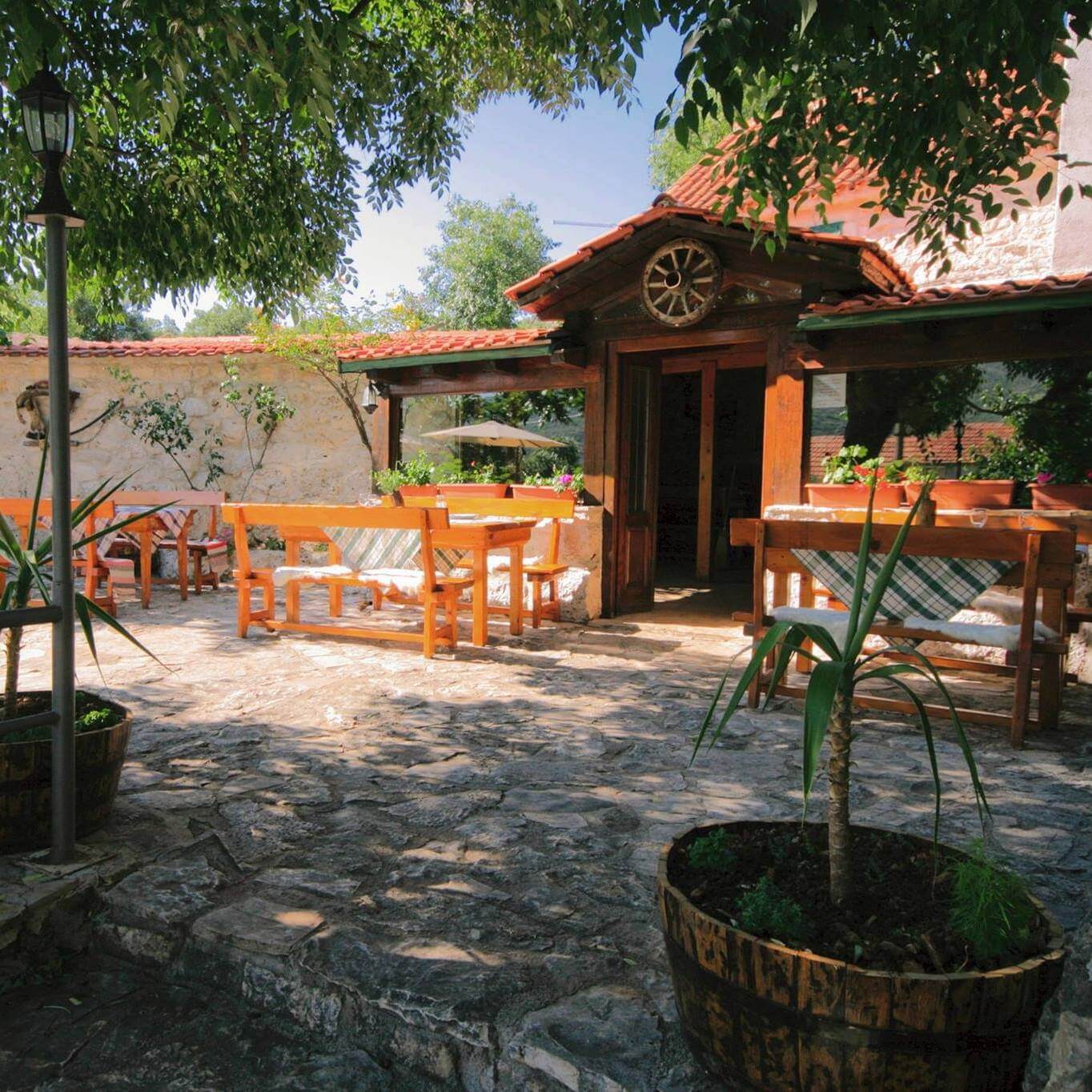 Eco-village Vrsine and inland Marina: Konoba Donja Banda
Eco-village Vrsine and inland Marina: Konoba Donja Banda
One of the greatest secrets to learn of a holiday in Dalmatia – but rarely one of the first – is that quite often, the further from the shore you travel, the better the food will be.
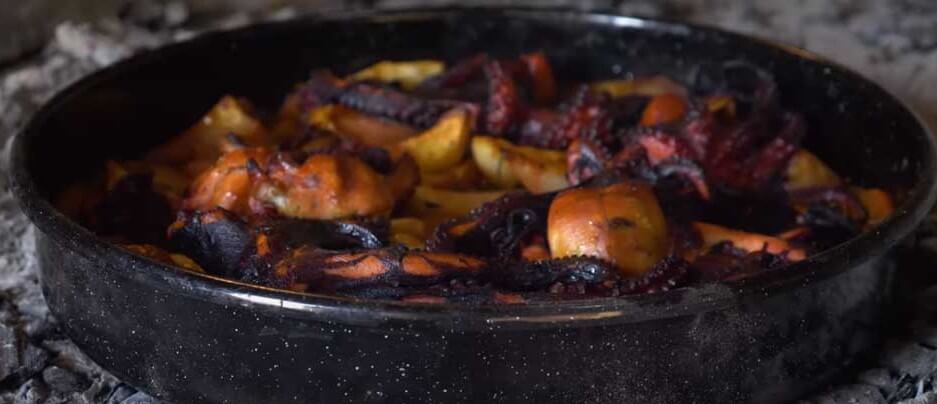 Peka at Konoba Donja Banda
Peka at Konoba Donja Banda
You'll find the flavour, range, portion size, authenticity, cost, and quality of ingredients and cooking all improve greatly when you venture inland. Whether that's a trip up into nearby foothills or a trek to a village, town or city restaurant of the true Dalmatian hinterland, you'll discover evidence of this time after time. Taverns have to work that much harder for a reputation when the sea view doesn't sell the meal.
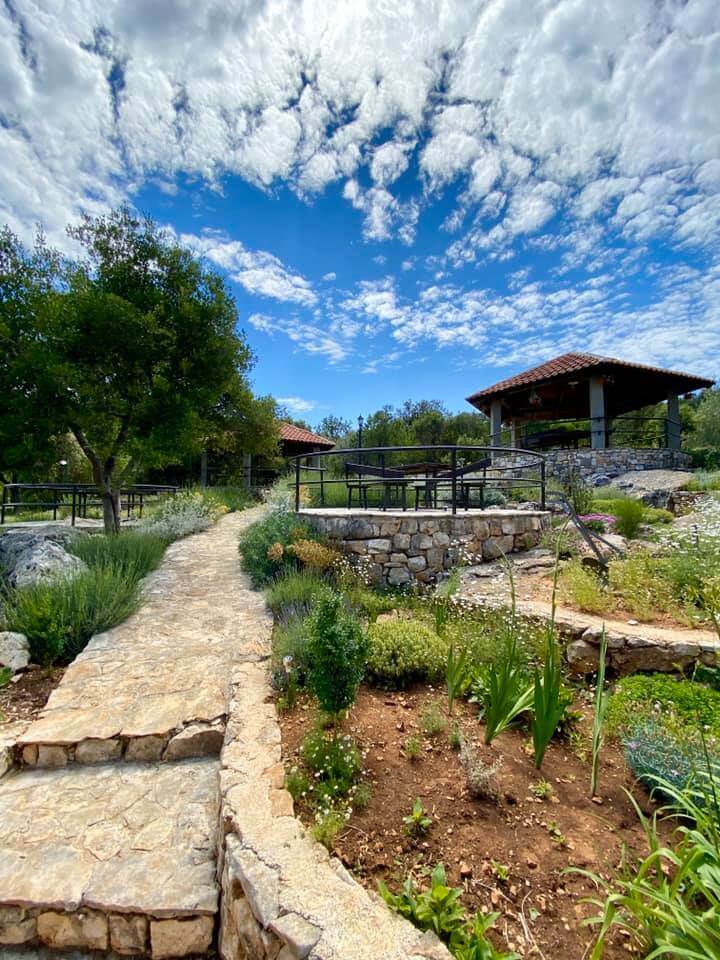
Nowhere is that more true than Tavern Donja Banda, where Roberto Nedeljko maintains the traditional cuisine Vrsine and its surroundings. All of their ingredients are sourced locally, including the olive oil and all of the wines. Indeed, many of their vegetables and herbs come from their own organic garden. Want to try traditional Dalmatian 'peka' – food cooked under a hot metal 'bell'? This is one of the best places in the area.

You can learn more about the tavern here.
You can find out more about holidays in Eco-village Vrsine and inland Marina by visiting Marina tourist board website here. For more great Croatia holiday ideas, bookmark Total Croatia News travel pages here.
Joško Stella: Split-Dalmatia County in August Only 11% Worse than Record 2019
August 20, 2021 - Split-Dalmatia County in August this year achieved 89% of 2019's record tourist traffic. But that's not all.
In August, the heart of the tourist season, Split-Dalmatia County is pleased to host an increasing number of tourists who will spend warm summer holidays by the sea, in the green heart of Inland Dalmatia, or on our islands.
In the first half of August, 89% of tourist traffic was recorded compared to 2019. There are as many as 88% more nautical guests compared to the same period last year. Almost all destinations in the County have reached or surpassed last year's figures, which means that we are well organized, and the realization of such a great season in excellent business conditions is the result of excellent cooperation between the private and public sectors in preparation, organization, and implementation of this tourist year. On this occasion, Split-Dalmatia County Tourist Board director Joško Stella revealed his impressions.
What are the tourist results in Split-Dalmatia County?
The first half of August in Split-Dalmatia County is only 11% worse than the record 2019. On August 10, we reached the tourist figures corresponding to the total tourist traffic realized during 2020. With each new day, we are one step closer to the record year 2019, and it is necessary to remain organized and disciplined and adhere to the prescribed epidemiological measures.
In the first 15 days of August, there were 418 thousand arrivals and 2.7 million overnight stays. Since the beginning of 2021, there have been 1,459,233 arrivals and 8,565,826 overnight stays, 55% more arrivals last year, and 47% more overnight stays than last year.
Which markets record the largest number of arrivals?
Observing the share of guests according to the countries they come from in 2021, we record excellent results from the Polish, German, Czech, Hungarian, Slovak, and French markets.
The French market is up 265%, Slovaks up 200%, Hungarians 180%, and Germans by 110%. Thus, on August 12, we reached the tourist figures corresponding to the total tourist traffic realized during 2020.
How much did this year's tourism results surprise tourism workers?
This year's uncertain and extremely stressful season for Split-Dalmatia County tourist workers, with a significant increase in tourist traffic in July and reservations and excellent announcements of guests in August, instills new optimism and hope that significant arrivals and overnight stays will mark the tourist months ahead and especially postseason. The number of guests visiting us has been growing steadily since mid-June, to be visited in July by 710,000 tourists who made 4.3 million commercial overnight stays, an increase of 62 percent in arrivals and 48 percent in overnight stays compared to the same month last year.
The current guests from Central Dalmatia left satisfied. That they passed on their impressions to others is confirmed by the growing number of airlines from Europe to Split, which means that airlines are following the growing interest of guests to come to our county.
How much has the favorable epidemiological situation affected our target markets?
Due to the favorable epidemiological situation, for which everyone in the tourism sector has been carefully preparing, Croatia is classified as a risk-free area according to the new rules introduced by Germany on August 1 for its citizens returning from other countries. Following the circumstances dictated by epidemiological measures, our hosts in tourist places have made an effort to organize and offer guests some new outdoor facilities that will not jeopardize their safe stay and will give them a pleasurable and experience-filled vacation.
How did Split-Dalmatia County prepare to receive such a large number of guests in complex circumstances?
In August, as the most generous tourist month in the business year, Central Dalmatia is ready to welcome its long-awaited guests and tourist companies, hosts in family accommodation, marinas, and camps, following strict epidemiological measures and safety standards. Like the whole of Croatia, which is currently the safest EU member in the Mediterranean due to the epidemiological situation, Split-Dalmatia County hosts world-famous people every day, who send the best marketing message of our tourism to the world.
In special circumstances, we communicate information about our safety and readiness for tourism to foreign partners, CNTB offices, and foreign media, which are our frequent guests. Despite the complex circumstances, tourism staff is ready to respond to all job requirements to ensure a safe stay to the satisfaction of all guests who arrive on holiday in our county.
We also have excellent results in July. Which markets achieved the largest number of arrivals and overnight stays?
According to data from the eVisitor system in Split-Dalmatia County, 710,671 guests stayed in commercial accommodation in July, 62 percent more arrivals than in July last year. They realized 4,318,121 overnight stays, an increase of 48 percent. In July, the largest number of arrivals and overnight stays from foreign markets were made by Poles (119,839 arrivals and 913,073 overnight stays). Tourists from the Czech Republic recorded 74,972 arrivals and 554,399 overnight stays, Germans 69,804 arrivals and 447,828 overnight stays, and tourists from Slovenia 42,209 arrivals 328,234 overnight stays.
In the first seven months of this year, there were 1,033,065 guests in commercial accommodation in Split-Dalmatia County, which grew 70 percent compared to the same period last year. In addition, 5,843,606 overnight stays were realized, which is an increase of 58 percent, compared to the first seven months of last year.
As much as 40% of all nautical nights were realized in Split-Dalmatia County. So what are the expectations for August and the post-season?
In July, boaters mostly visited the waters of Split-Dalmatia County. Thus, in July in Central Dalmatia, 41,202 boaters realized 257,492 overnight stays, almost 40 percent of all nautical overnight stays in Croatia.
In the first half of August, there were 19,212 arrivals and 152,467 overnight stays, 88% more arrivals, and 131% overnight stays. Since the beginning of the year, there have been 99,720 arrivals and 650,000 overnight stays, an increase of 155% in arrivals and 146% in overnight stays. We expect an equally good second part of August and a good post-season.
We are extremely proud that we have successfully realized a virtual display of sea routes in cooperation with colleagues from the county. Google Maps have the most users in the world, they number in the hundreds of millions, so it is imperative to be well-represented on them. These are the maps on which most navigation devices are based today. The vast majority of our guests use these maps when arriving at the destination. By bringing a virtual display of sea routes to almost every place in our county, guests can tour our entire coast before their arrival virtually. This service is a novelty globally and will make it much easier for boaters to find the desired destination. And when they actually arrive at the location, they will feel like they have already been there. So far, over 14 million views have been recorded. Also, this project has a significant social and communal purpose, achieving more transparent, accountable, and efficient management of maritime assets.
For more, make sure to check out our dedicated travel section.
PHOTOS: Extraordinary Plants of Klis Fortress Show Two Sides of Dalmatia
January 2, 2021 – High on the mountains, overlooking the city of Split, the historic settlement of Klis stands on the border between two distinct climate regions – the Mediterranean and the Dalmatian hinterland. The sometimes rare and extraordinary plants of Klis Fortress are characteristic of both. A new book details the flora you can find on both sides of the Dinaric Alps
The views from Klis are spectacular. The great city of Split lies below you, perched on the edge of the glistening Adriatic, beyond it, the islands of Čiovo, Šolta, Brac, Vis and Hvar. It's a view that has been admired for over 2000 years. The view from Klis Fortress
The view from Klis Fortress
That's how long a fortress has stood here. Restructured and rebuilt several times over the millennia, within the walls of the impressive Klis Fortress lie much of the recent history of these lands – of the Illyrians and the Romans, the arrival of both Slavic people and of Christianity, the defence of Christian Europe from the Ottomans. So steeped in history are these walls, little wonder the fortress was chosen as a filming location for the popular Game Of Thrones series.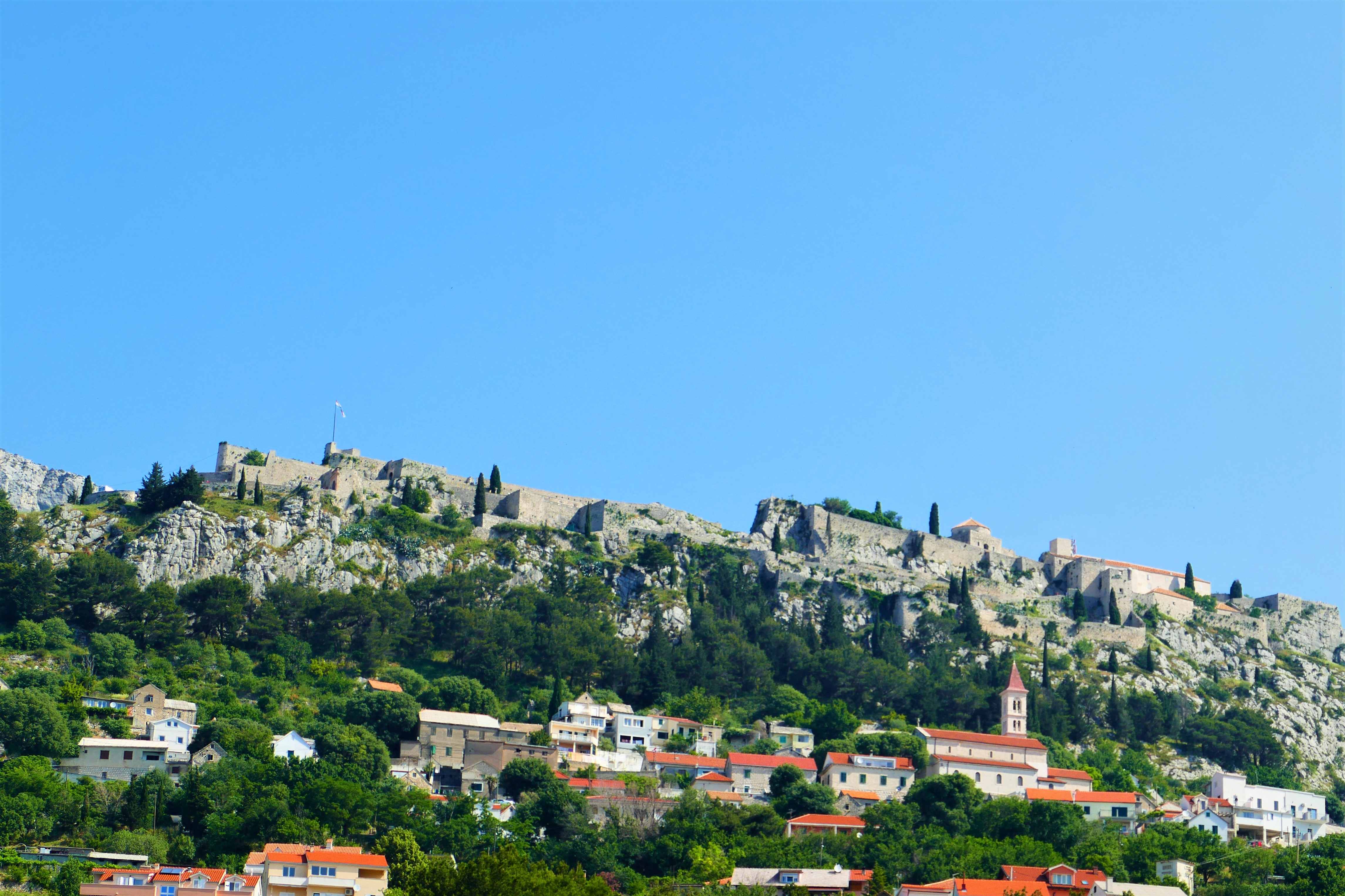 Klis Fortress
Klis Fortress
With its view so irresistibly inviting the eye, you could be forgiven for missing the plants of Klis Fortress. That's unfortunate. The fort straddles the top of the Dinaric Alps – one half existing within the sub-Mediterranean climate of the Dalmatian hinterland, the other on the distinctly warmer side of the Adriatic. This creates a unique environment for a wealth of flora. Not used as a fortress since the threat of Ottoman invasion subsided, these days the structure usually welcomes only tourists. The plants of Klis Fortress have reached into the grounds of the buildings, indeed into its very walls.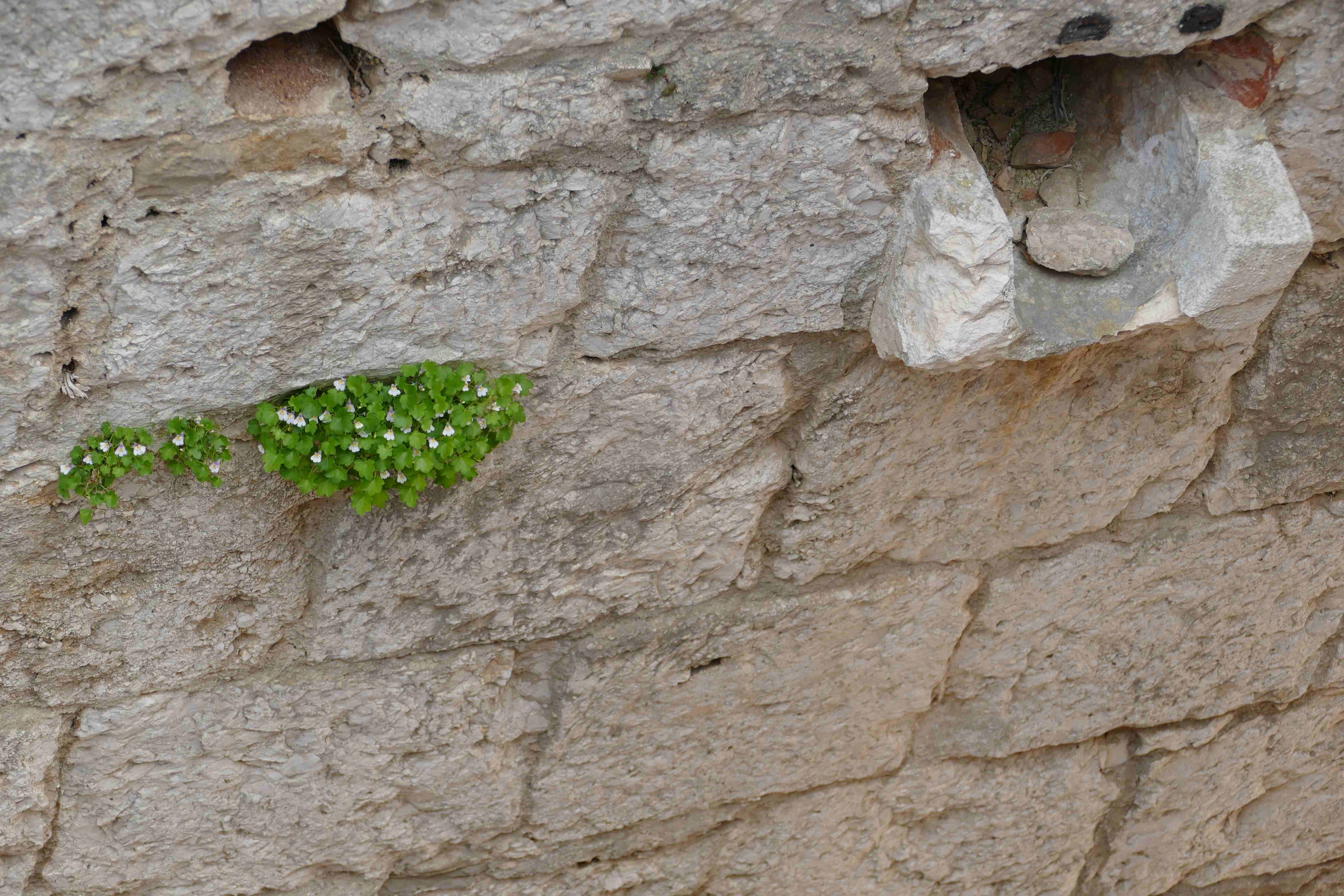 Cymbalaria muralis - Ivy Leaved Toadflax within the walls of Klis Fortress
Cymbalaria muralis - Ivy Leaved Toadflax within the walls of Klis Fortress
One person for who the plants of Klis Fortress did not go unnoticed is Ivan Limić. He lived in Klis all of his life, before leaving to get his degree, then a masters, at the Forestry department of the University of Zagreb. Today, he works for the Institute for Adriatic Crops and Karst Reclamation (IAC) on a PhD student's position. Having a specific interest in botany, he knows the plants of Klis Fortress better than most and after he met botanist Vedran Šegota of Herbarium Croaticum while in Zagreb, they decided they should work on a project together. After several years of work, that project - a book, 'Biljke Tvrdave Klis (Plants of Klis Fortress)' – has finally been released. Although helmed by co-authors Vedran and Ivan, it has actually been a project that involved a much greater group of contributors, not least the community of Klis and some of the best botanists in Croatia.
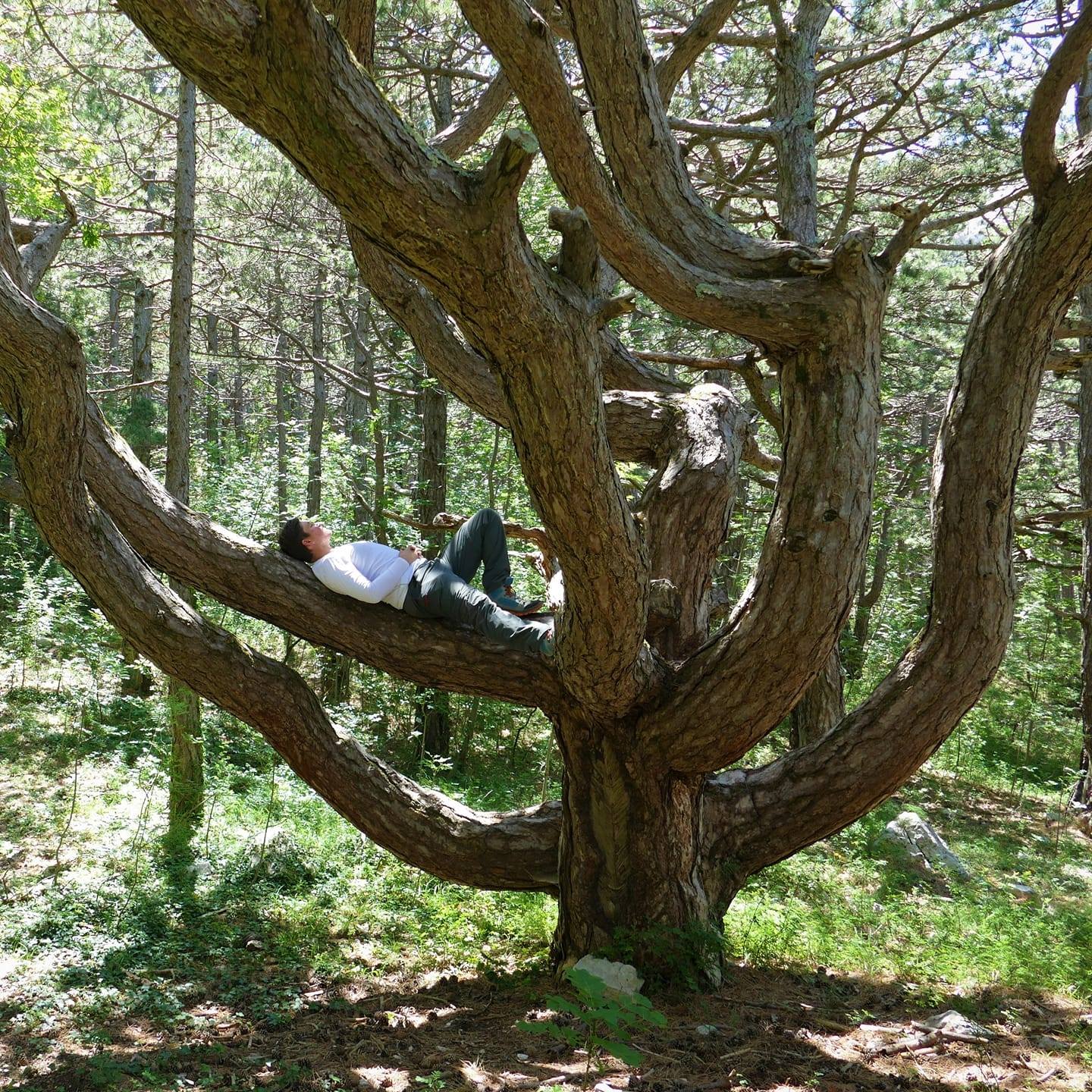
Ivan Limić, co-author of 'Plants of Klis Fortress', relaxing in a Black Pine
TCN talked with Ivan Limić to find out more about the book and about the plants of Klis Fortress
I first met Vedran when I started volunteering at Herbarium Croaticum Zagreb. I was in the city doing my degree. My main interests are forest silviculture and soil erosion, karst melioration, assessment of atmospheric deposition, study of flora, plant determination in Mediterranean region forest ecosystems and the effects of forest fires in those areas. We talked about doing a joint project because we shared similar interests. Vedran came to visit me in Klis and I wanted to show him around the fortress, but looking specifically at the flora. That's when we decided we should do a book about the plants of Klis Fortress.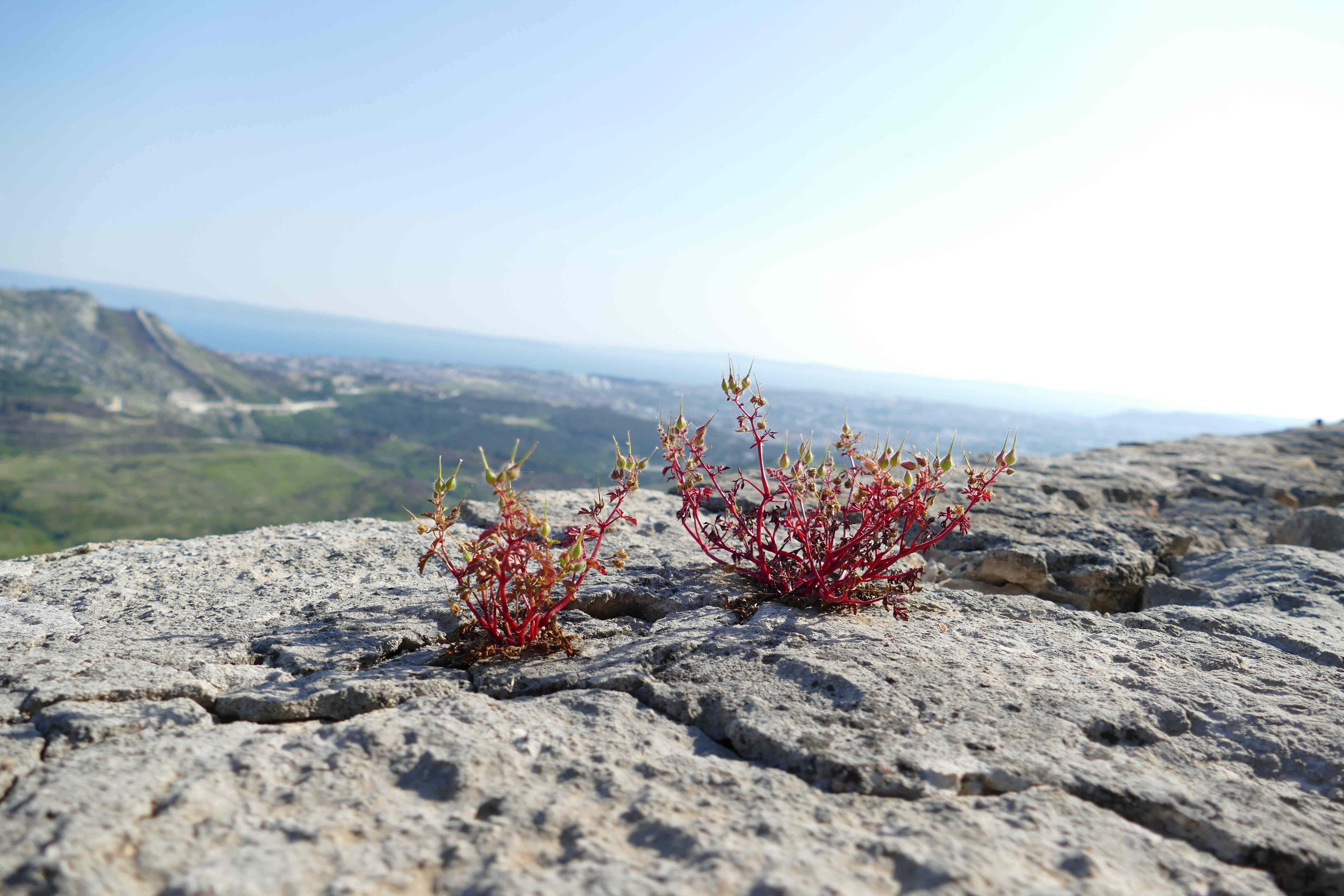 Geranium purpureum, the little-robin
Geranium purpureum, the little-robin
I walked around Klis Fortress all my life. When you live in a place, you not only acquire so much information about that place over the years, you also have an emotional connection to it. That's not something you can read in every book. Hopefully, with our book, we managed to get a sense of that emotional attachment across, so that you can really feel the place.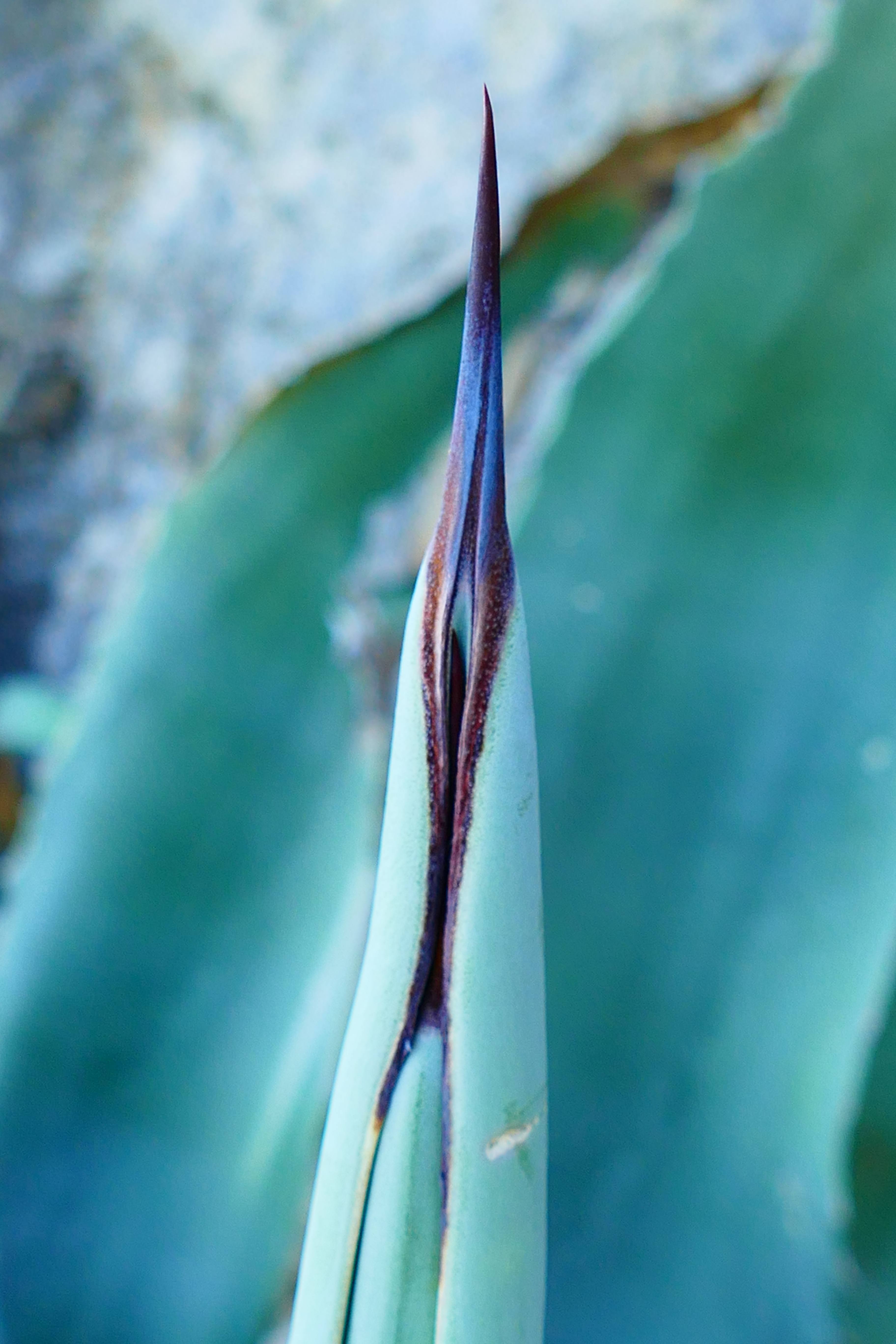 Agave americana
Agave americana
In a way, the special thing about the plants of Klis Fortress is that they are not so special at all – they are extremely characteristic. But, they are characteristic of two completely different climate regions.
On the south side of Klis Fortress, it is very warm and sunny – the Mediterranean climate. You can find species like Aleppo pine. On the northern side of Klis Fortress, it is colder – the sub-Mediterranean climate. Here, you can even get snow in winter and the most common species is Black pine. Two completely different climate regions in just a 50 metre stretch diagonally along the ground. That's what makes it extraordinary. Salvia officinalis (sage)
Salvia officinalis (sage)
The plants of Klis Fortress include more than 300 species. We have around 100 of them listed in the book. Of those, 16 are species endemic to this area. Some of those are extremely rare - you can find them in very few places in Croatia - such as Fibigia triquetra. That plant is actually one of the reasons why this book exists. When I was a child, people used to tell me that some of the plants of Klis Fortress were very unusual and very rare. I used to walk around the fortress, looking at all the plants, trying to guess which ones were the unusual and rare species.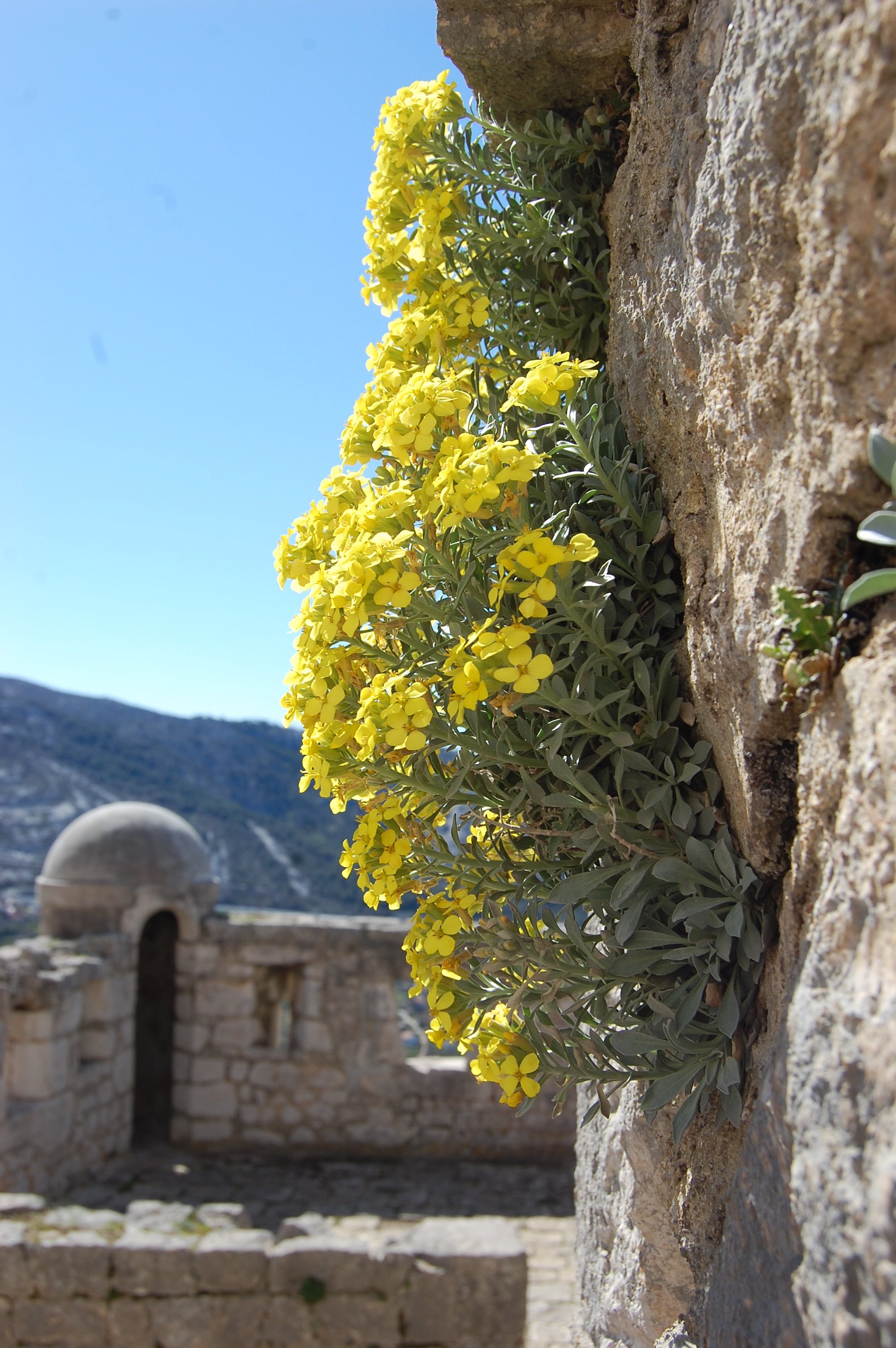 Fibigia triquetra
Fibigia triquetra
The man who first identified this as a unique, endemic species actually discovered his first specimen inside Klis Fortress. All of the studies and writings he made about the plant were done here. That plant is now the symbol of Klis Fortress.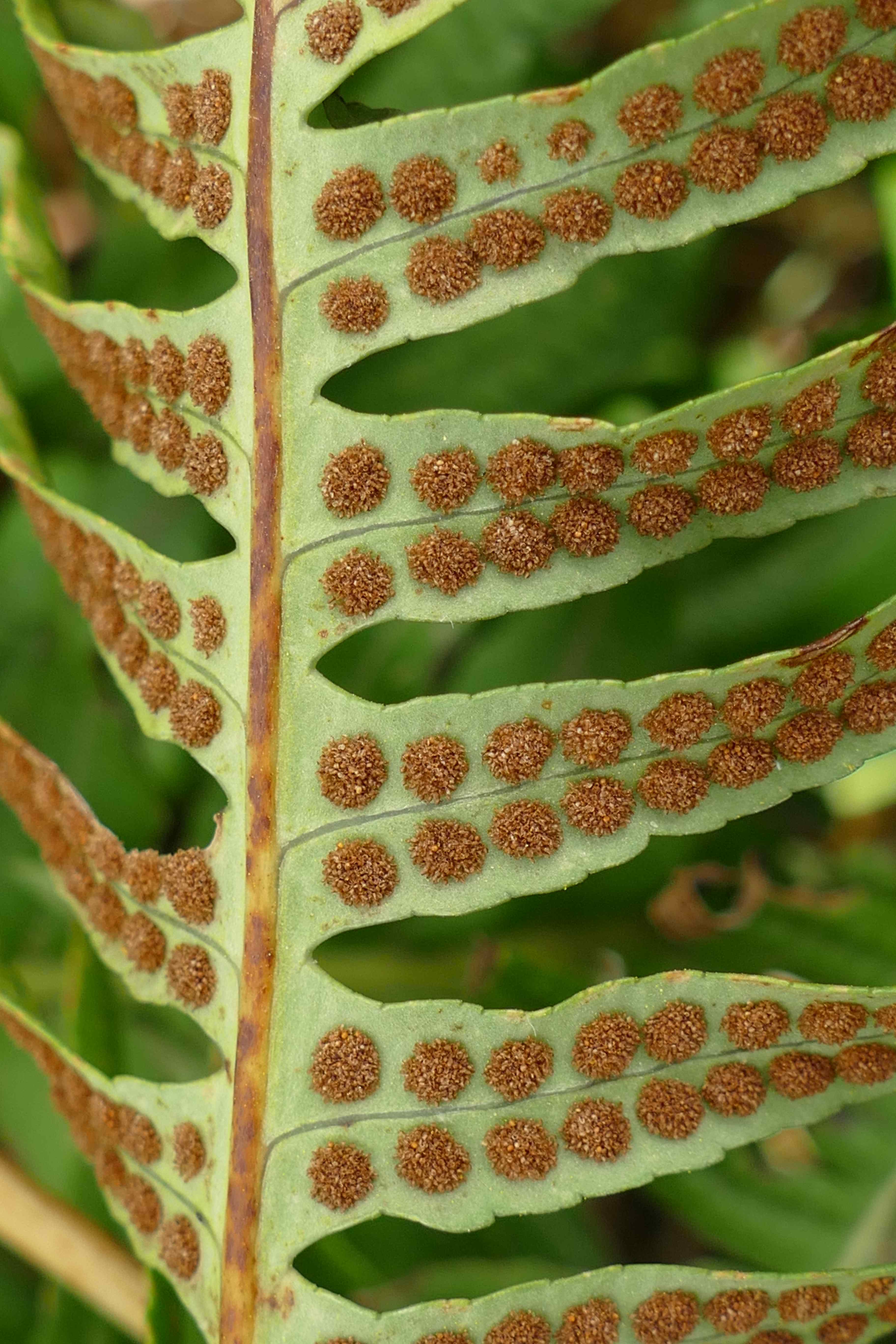 Polypodium cambricum
Polypodium cambricum
You can find our book in Klis library. Anyone can borrow it. It's also available at the entrance to Klis Fortress, where you buy the tickets. We wanted to give the opportunity to anyone who comes here to learn about the plants of this region – that's why we made such an effort to have the book in five languages. It was designed as a guide to the plant species of the whole Mediterranean mountain region in Croatia, so it's not just for the plants of Klis Fortress or the people who come to Klis Fortress itself.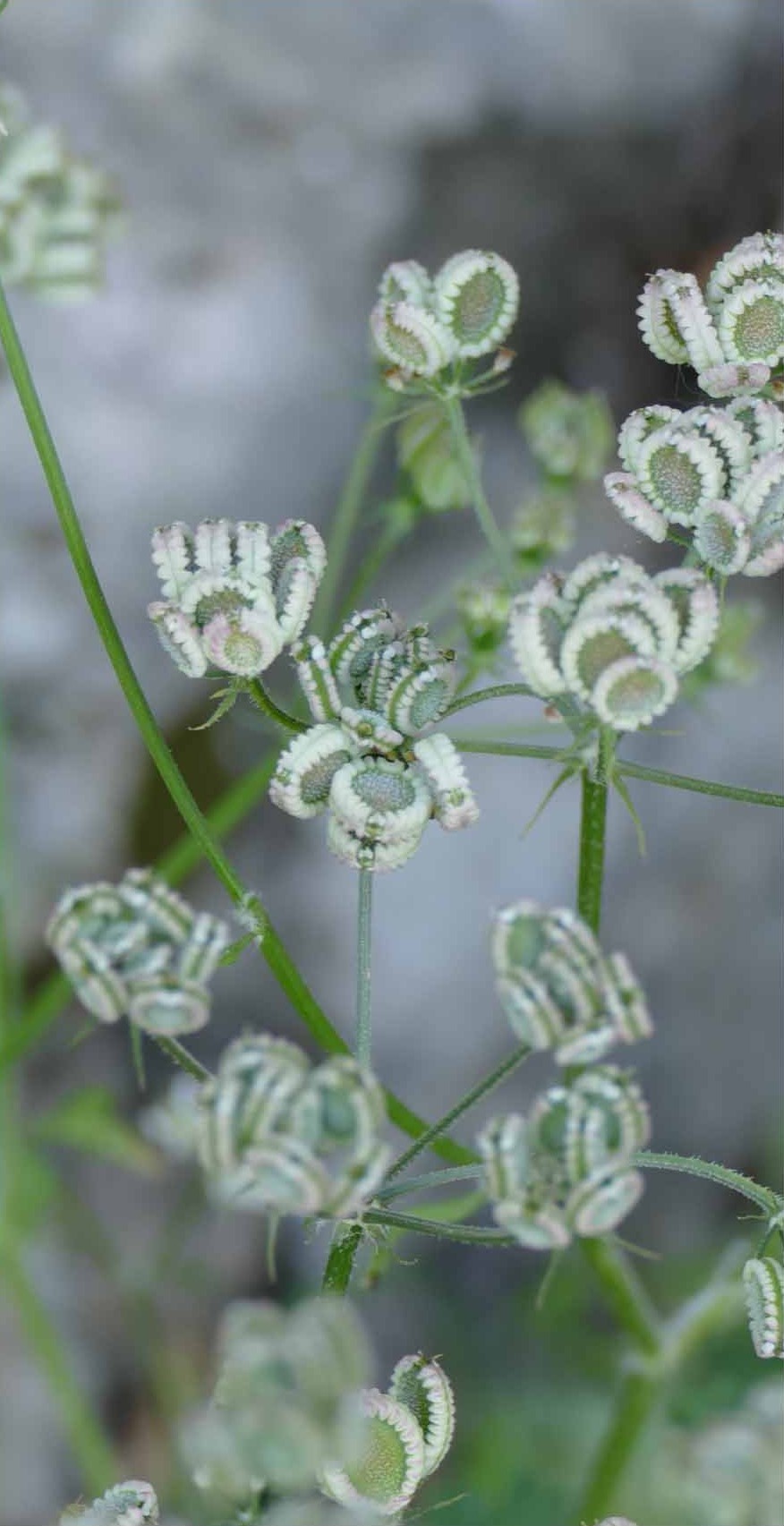 Tordylium
Tordylium
Most of the photography in the book was done by ourselves. It was important to take the photographs across four different seasons. That's one of the reasons it took almost two years to write this book.
 Inula Verbascifolia
Inula Verbascifolia
As we were making progress on the book, people in Klis began to find out what we were doing. It ended up becoming a project of the wider community. The mayor of Klis supported the project financially so that we were able to publish the book professionally and the library of Klis edited and published the book.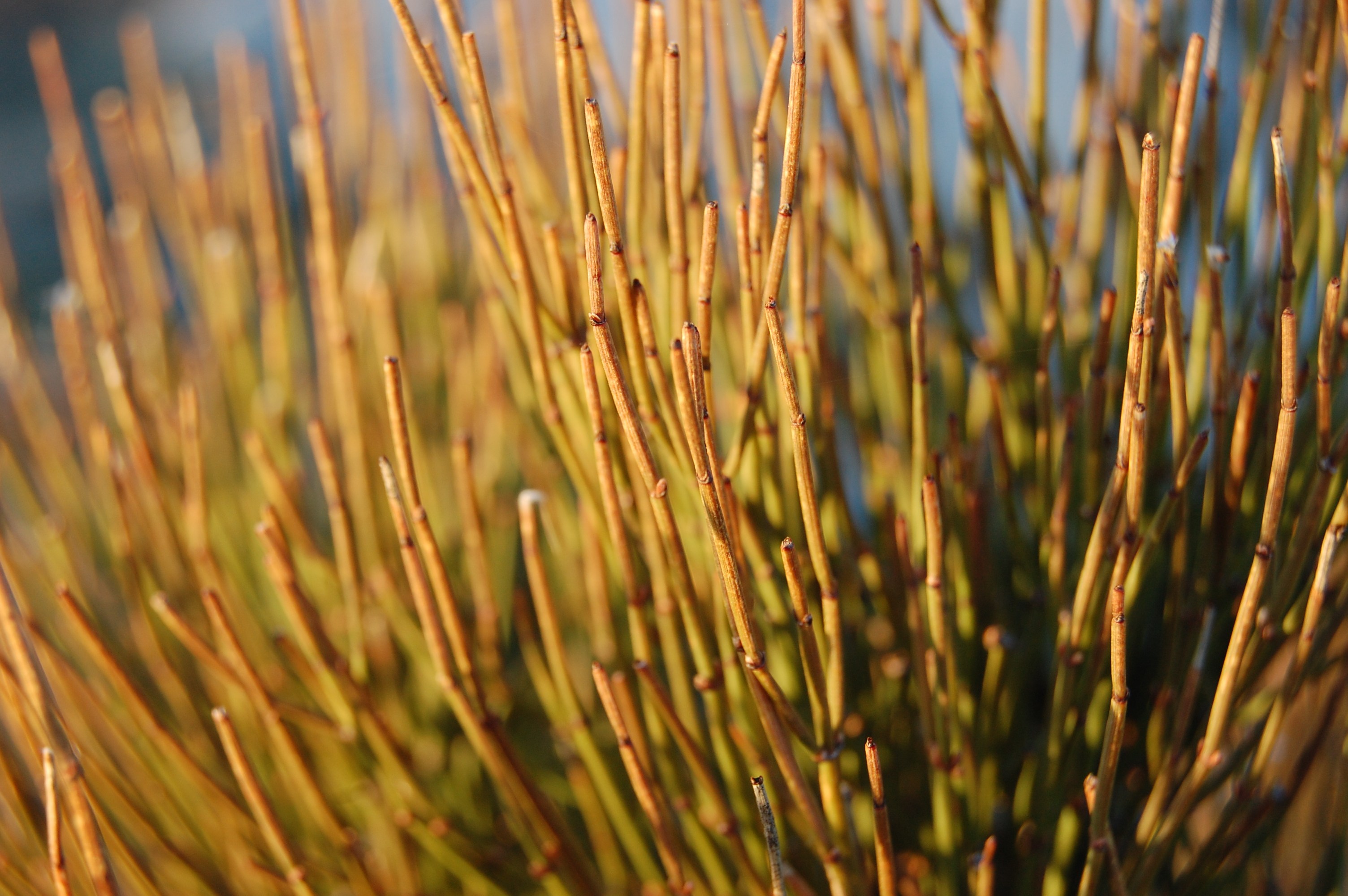 Ephedra major
Ephedra major
Others contributed to the design of the book and the translations, of course. Almost all of them donated their time and work to the project for free. It is quite difficult to translate some of this specific text correctly and we wanted to get it absolutely right. 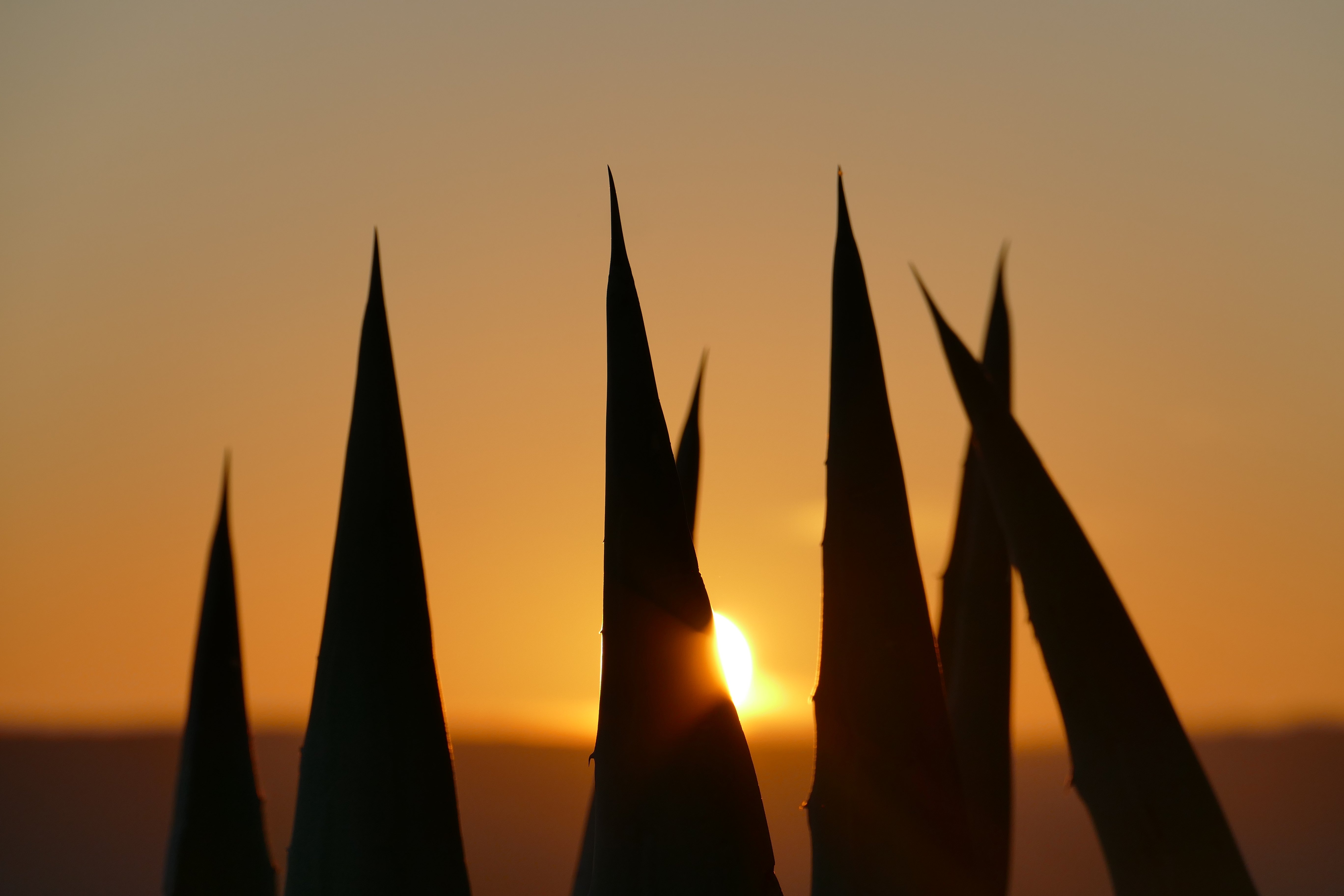 Agave americana
Agave americana
In the end, we ended up getting contributions from Italy and France, we had one colleague from the French embassy who helped and some of the best botanists we have in Croatia contributed to the book to make sure everything was absolutely correct. For that reason, the book was approved and recommended by the Botanical Society of Croatia and can be found in the Botanical library.
All images © Ivan Limić / The Plants of Klis Fortress
Split-Dalmatia County Achieves Largest Growth on Croatia's Coast
According to eVisitor data, there were 19,110,498 overnight stays and 3,698,159 million tourist arrivals in Split-Dalmatia County in 2018, which is a 9 percent increase compared to 2017 and a 5 percent increase in overnight stays, reports HRTurizam on January 11, 2019.
This is also the most significant growth achieved in all coastal tourist counties in 2018.
In Croatia's total tourist turnover, Split-Dalmatia County has a share of nearly 20 percent, or, in other words, every fifth guest of Croatia in commercial accommodation has stayed in Central Dalmatia.
"Numerous Advent events in the towns and cities of our County attracted a large number of visitors in December, so Split-Dalmatia County hosted more than 33,000 guests in that month, achieving growth in December and the New Year's holidays by as much as 18 percent in overnight stays and 34 percent in arrivals. Thus, the business year was completed in the best way by continuing the excellent trend that marked the growth of tourism turnover in the last year, and the biggest in the pre-season and post-season, which, together with the growth of quality services, was our main goal,” says Joško Stella, director of the Split-Dalmatia County Tourist Board, who added that the goal is to position Central Dalmatia as a desirable and indispensable destination for rest, fun and relaxation throughout the year.
In the Split-Dalmatia County area, up to 197 million euro will be invested in tourism in the coming year, with the city of Split being the most attractive for investors, and where eight hotels with 4 to 5-stars are being constructed.
Thus, Split-Dalmatia County, measured by the growth of tourist traffic in the months outside of the season, is the overall winner of tourism. From March until the end of December, the growth of tourist arrivals was the largest in the country, while the real star was the city of Split, which recorded double-digit growth in visitors and overnight stays throughout the year.
"Record investments in accommodation capacities for the 2019 season in the Split-Dalmatia County area reach 197 million euro, where the city of Split will be the most attractive to investors to raise the quality of services and give new reasons to extend the season further," concludes Stella.
In the area of Split-Dalmatia County, the largest share of overnights was the Split Riviera, followed by the Makarska Riviera. The biggest growth in traffic last year was recorded by Inland Dalmatia, which had 15 percent more overnights than the year before.
Thus, Central Dalmatia has firmly positioned itself as the second strongest tourist region in the country, just behind Istria, and in front of Kvarner, which has been the second place in the country for decades.
To read more about travel in Croatia, follow TCN's dedicated page.


